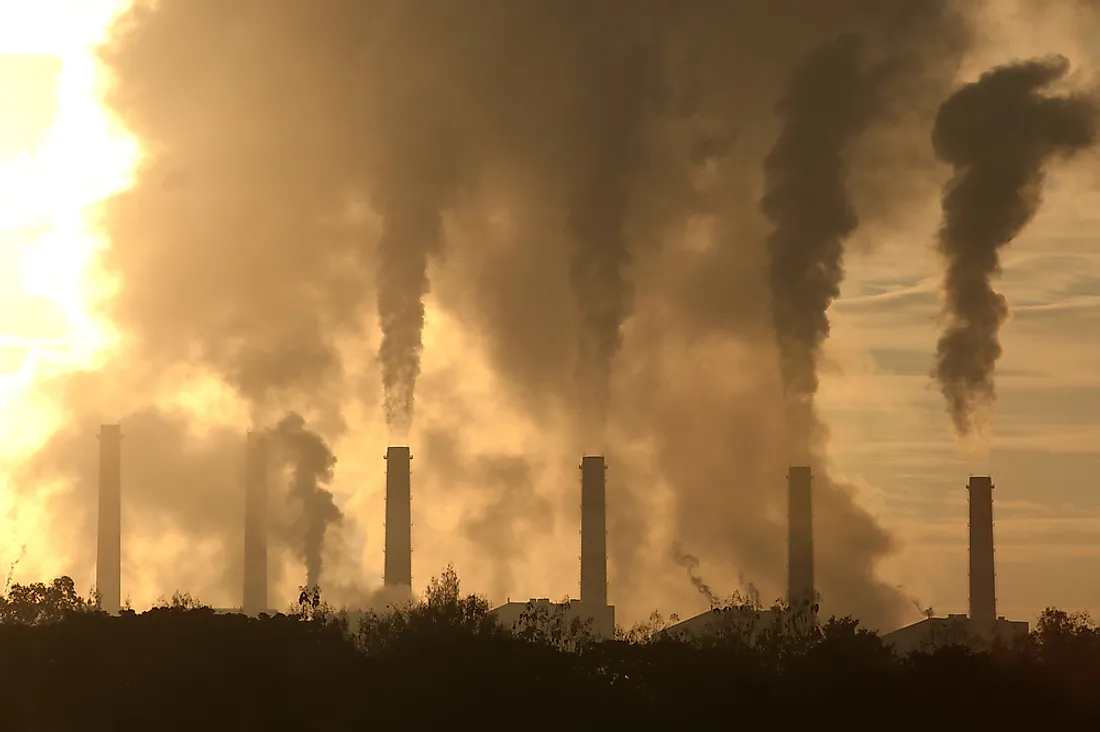Which Industry Emits the Most Greenhouse Gas?

Greenhouse gases include carbon dioxide, methane, nitrous oxide, and fluorinated gases. These gases collect in the earth’s atmosphere from both natural and human activities. They work to absorb solar radiation, in the process, some is released back into the atmosphere where it is trapped. This excess solar radiation effectively warms the earth’s surface which is a good thing, in moderation. Greenhouse gases are necessary to maintain livable temperatures for plants, animals, and humans. Without them, the earth’s surface would be freezing. An excess of greenhouse gases, however, contributes to global warming. Global warming changes weather patterns and leads to increased storm activity, melting ice caps, and rising sea levels which have detrimental effects on ecosystems and biodiversity across the globe. This article takes a look at which human activities contribute the majority of greenhouse gas emissions in the US.
Greenhouse Gas Emissions by Sector
Power Generation
The leading contributor of greenhouse gas production in the US is the production of electricity. Electricity in this country is largely produced by burning fossil fuels (nonrenewable energy sources such as oil, coal, and natural gas). Of all the greenhouse gas emissions, 30% comes from the electricity sector. This sector emits mainly carbon dioxide but does produce methane and nitrous oxide as well. Burning coal accounts for 39% of the electricity generated in the US, and coal burning is a carbon-intensive process. Natural gas produces 27% of electricity and leads to more methane production than coal. Emissions from electricity production have increased by 12% since 1990.
Transport
The second largest greenhouse gas contributor is the transportation sector which accounts for 26% of all emissions. Transportation includes planes, trains, automobiles, buses, trucks, and ships. The biggest problem with transportation is its reliance on fossil fuels which produce mainly carbon dioxide. More than half of the transportation industry’s emissions come from private vehicles.
Manufacturing
Industry, or manufacturing, contributes 21% of emissions. Raw goods and finished products contribute directly, or on-site, and indirectly, or off-site. Indirect emissions come from the factory’s demand for electricity which is produced off-site and by burning fossil fuels. Industry contributes directly by burning fossil fuels for energy. Chemical reactions occur in order to produce metals, cement, and chemicals. Some uncontrolled leaks are also released during production activities.
Homes and Businesses
Commercial and residential emissions make up 12% of greenhouse gases in the US. These are produced by business and people for heating, cooking, and waste management. Air conditioning systems also contribute to refrigerant pollutants, or fluorinated gases. The natural gas and petroleum used for heating and cooking emit carbon dioxide, nitrous oxide, and methane. Waste that is sent to landfills emits methane when decomposing and wastewater (sewage) treatment facilities emit methane and nitrous oxide.
Agriculture
The final contributor to greenhouse gas emissions in the US is the agricultural sector which is responsible for 9% of the total. This industry raises livestock on factory farms and produces food for human and animal consumption. Nitrogen is added to soil as a fertilizer which results in nitrous oxide emissions and livestock waste produces methane gases in large quantities.
Measures Aimed at Reducing Emissions
All sectors have made small changes in order to join the global fight against climate change. Measures have been taken to increase energy efficiency in power plants by switching from coal to natural gas. Some power plants have begun using pulverized coal rather than conventional because it requires less coal to produce the same amount of energy. Public and private sectors have also been investing in renewable energy such as solar, water, and wind power. The same is true in the transportation and industry sectors which have moved toward alternative fuel sources in an effort to reduce greenhouse gas emissions. New homes and businesses are being built with energy efficiency in mind. Municipalities and corporations are also promoting recycling programs. The agricultural sector has also focused on using less nitrogen in soil and draining rice fields to reduce methane emissions. While all of these efforts represent a step in the right direction, greenhouse gas emissions are still rising. Governments and private businesses alike must come together to agree on a comprehensive and strict approach for reducing greenhouse gases if global climate change is to be reversed.
US Greenhouse Gas Emissions by Economic Sector
| Rank | Economic Sector | Contribution to Total Greenhouse Gas Emissions, 2014 |
|---|---|---|
| 1 | Electricity | 30% |
| 2 | Transportation | 26% |
| 3 | Industry | 21% |
| 4 | Commercial and Residential | 12% |
| 5 | Agriculture | 9% |











